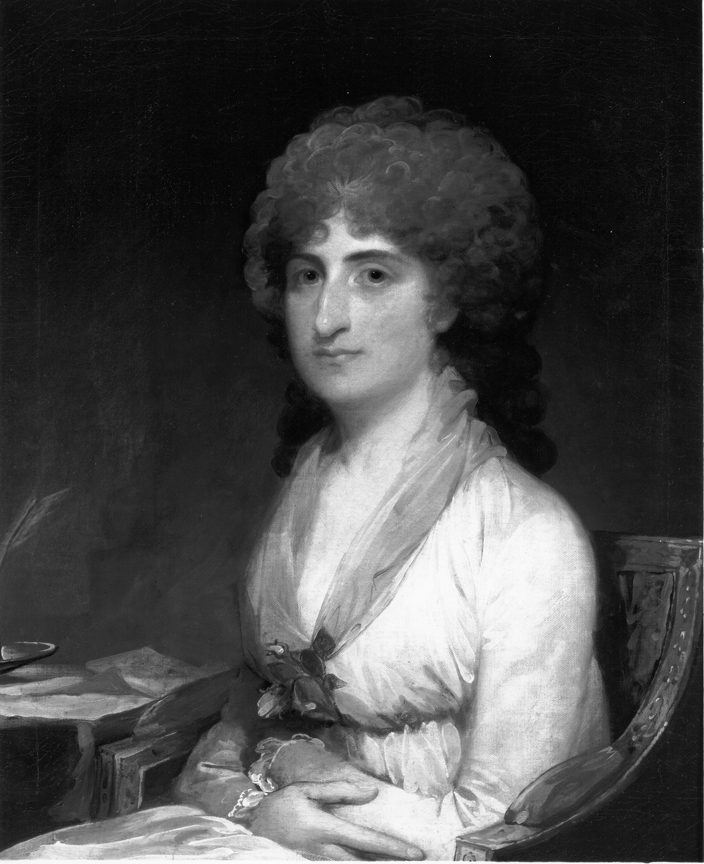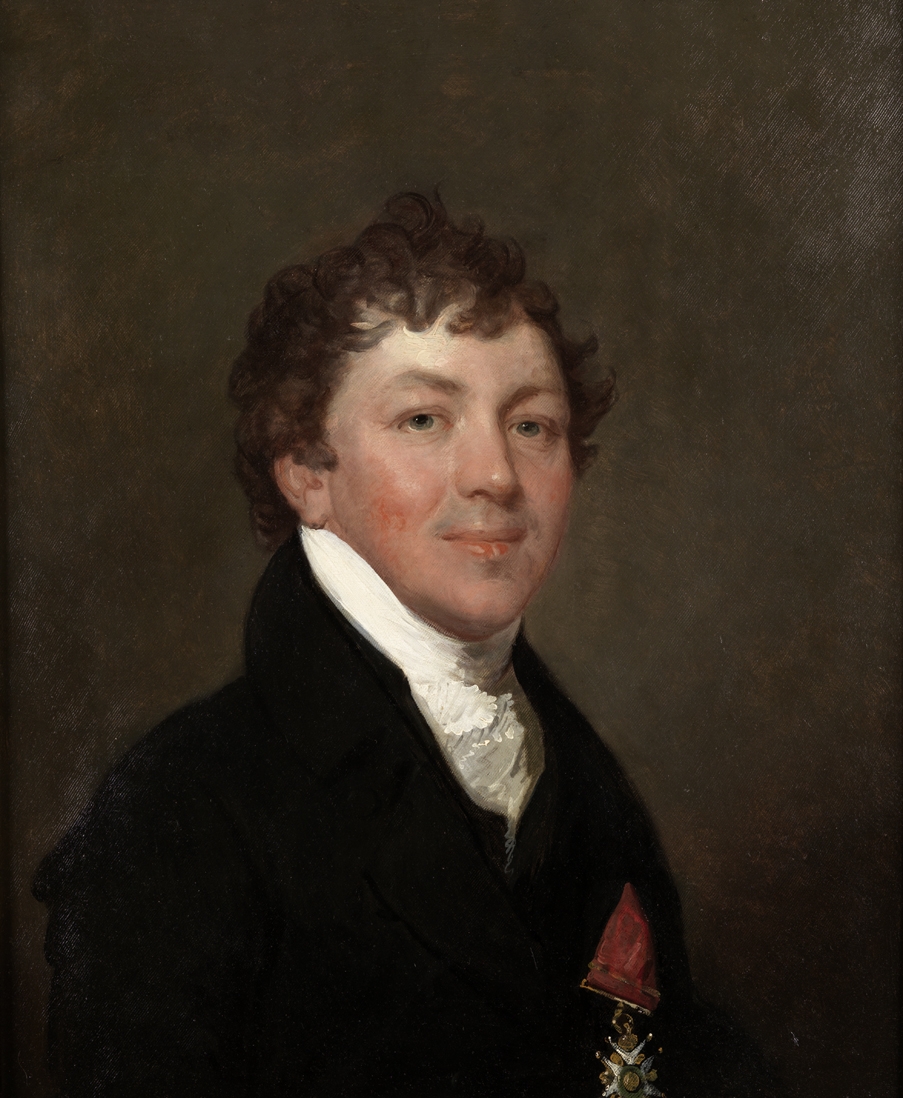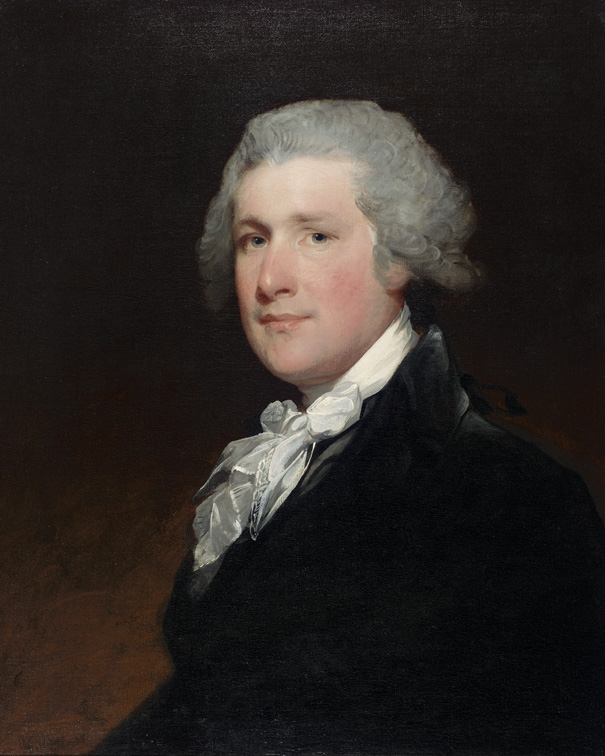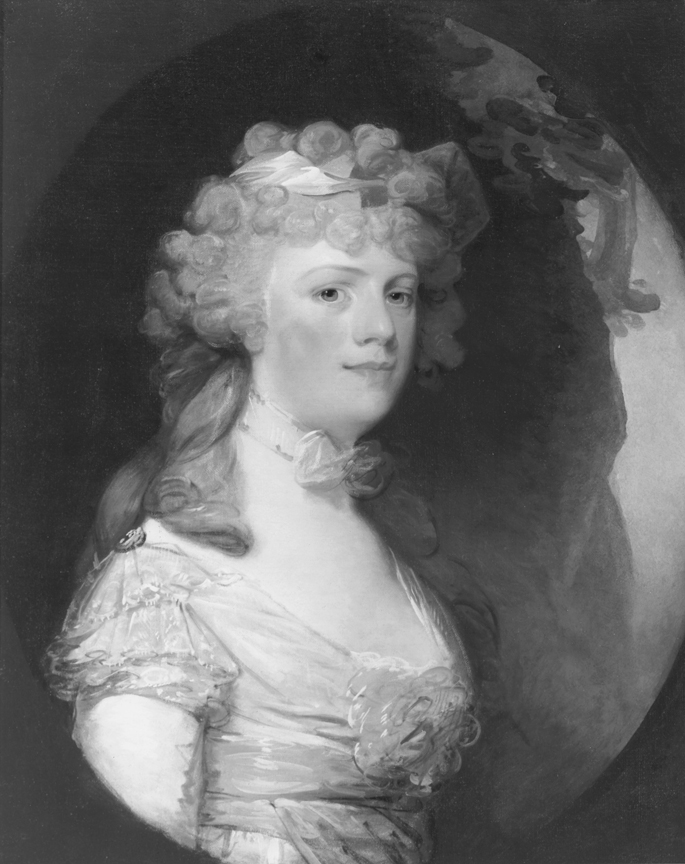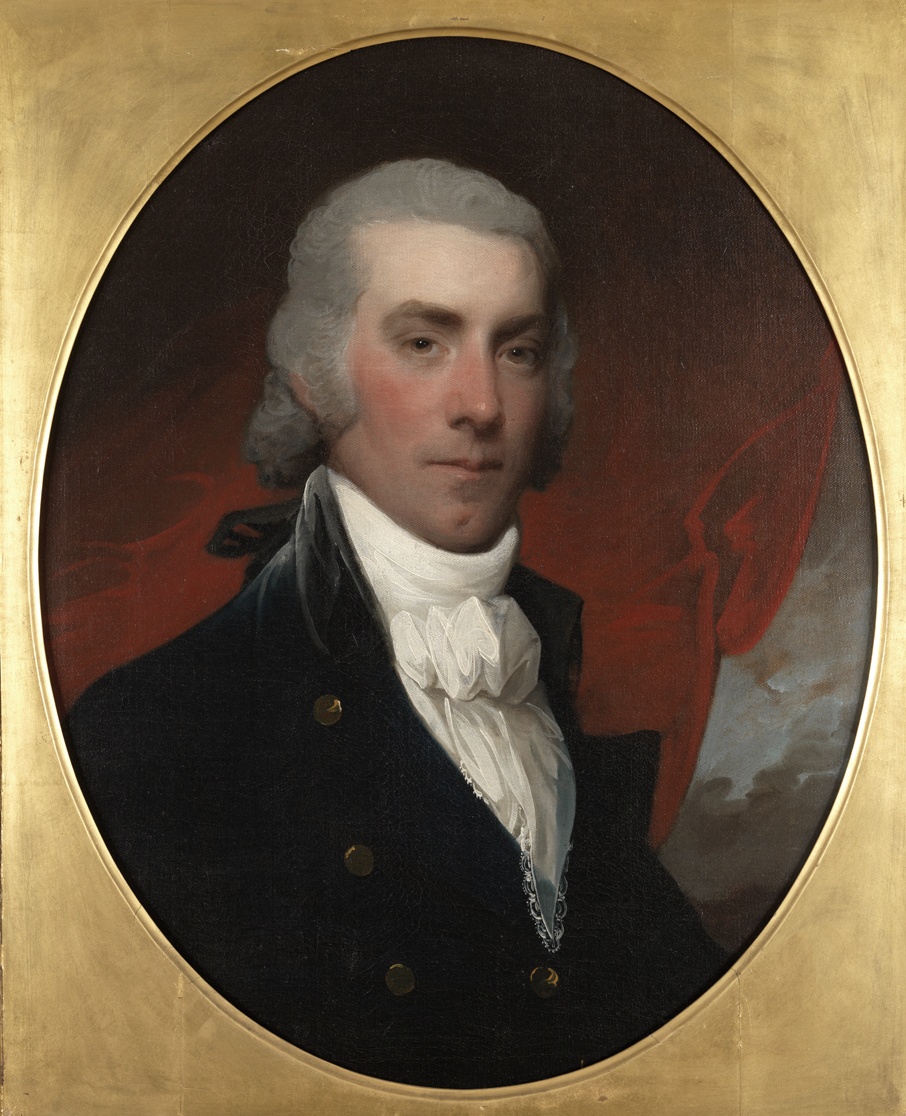
George Plumstead
Gilbert Stuart
George Plumstead (1765-1805) was a Philadelphia merchant from a prominent Quaker family. His father and grandfather built the family fortune and served as mayors of Philadelphia during the eighteenth century. After marrying Anna Helena Amelia Ross (1776-1846) in 1795, he bought land on the Schuylkill River and built a large neoclassical house called Chamounix. The Plumsteads also maintained a town house in Philadelphia and were typical of the elite clientele that Gilbert Stuart sought as patrons. More extravagant in lifestyle and less successful in business than his forebears, George Plumstead died at the age of forty after accumulating an enormous debt. His wife, forced to sell the family property to support herself and their four children, managed to keep these portraits from the auction block. Later in the century, they passed to an heir who bequeathed them to the Pennsylvania Academy of the Fine Arts.
The Plumsteads were typical of the elite clientele that Gilbert Stuart sought as patrons. Wealthy and well connected, they were interested in having their likenesses painted by the most fashionable artist. Before he moved to Philadelphia in 1793, the American-born Stuart had spent almost two decades in England and Ireland, practicing the latest portrait styles. His freely painted surfaces, emphasis on the texture of lace and fancy powdered hairstyles, and background accoutrements, such as red curtains and classical columns, are adapted from the grand-manner portraits of Thomas Gainsborough and Sir Joshua Reynolds. Even after Stuart moved to Boston in 1805, his new European style had a great effect on Philadelphia portraiture, especially on the work of Thomas Sully and John Neagle.
Artist
Date of Birth
(1755-1828)
Date
1800
Medium
Oil on canvas
Dimensions
29 1/4 x 24 1/4 in. (74.3 x 61.6 cm.)
Accession #
1891.12.1
Credit Line
Bequest of Helen Ross Scheetz
Copyright
No known copyright restrictions
Category
Subject
We're so excited you're planning to visit PAFA!
Make time for art — visit us Thursday to Sunday.
Before reserving your tickets, please review helpful information about museum hours, accessibility, building access, and special admission programs.
If you have any questions, feel free to reach out to us at visitorservices@pafa.org — we’d love to help!
